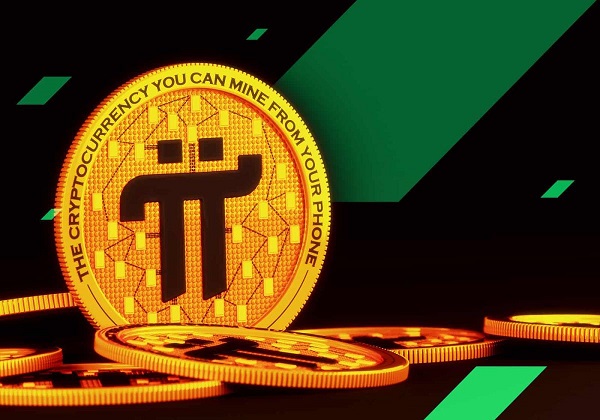Pi Network is a relatively new cryptocurrency project that has gained attention due to its innovative approach to mining and community-building.
While it shares common goals with established cryptocurrencies like Bitcoin, Ethereum, and Litecoin, its approach differs significantly in several key areas.
Below is a comparison of Pi Network’s strategy with that of other major cryptocurrencies that have already launched their mainnets.
1. Mining Process
- Pi Network: Unlike traditional cryptocurrencies, Pi Network employs a mobile mining model that allows users to mine coins directly on their smartphones. This process does not require significant computational power or specialized hardware, making it accessible to a broader audience without the need for costly mining rigs or high energy consumption.
- Bitcoin/Ethereum/Litecoin: These cryptocurrencies rely on proof-of-work (PoW) for consensus, which involves solving complex mathematical problems using powerful hardware (ASICs or GPUs). This mining process is energy-intensive, and only those with the necessary equipment can participate in mining, creating a barrier to entry for casual users.
2. Mainnet Launch
- Pi Network: Pi Network is still in the testnet phase, with its mainnet not yet fully operational. While users can mine Pi coins, these coins do not have real-world value and cannot be traded until the mainnet is launched. The Pi Network is focusing on building its user base and preparing for a future where the coins can be exchanged.
- Bitcoin/Ethereum/Litecoin: These cryptocurrencies launched their mainnets from the start, and their tokens were immediately tradeable on exchanges. The value of these coins was established early on, based on their network utility, market adoption, and unique features.
3. Network Consensus
- Pi Network: Pi Network uses a Federated Byzantine Agreement (FBA) consensus mechanism, which is designed to enhance scalability and energy efficiency. Rather than relying on computational power to validate transactions, the network uses security circles—trusted members within the community who validate transactions.
- Bitcoin/Ethereum/Litecoin: Bitcoin and Litecoin use proof-of-work (PoW), where miners compete to solve cryptographic puzzles and validate transactions. Ethereum, after transitioning to proof-of-stake (PoS) in its upgrade to Ethereum 2.0, now uses validators who are chosen based on the amount of cryptocurrency they stake in the network.
4. Accessibility & Ease of Use
- Pi Network: Pi’s mobile-first approach allows anyone with a smartphone to participate in the network by simply installing an app. This lowers the entry barrier significantly, making it accessible to users without technical knowledge or specialized hardware.
- Bitcoin/Ethereum/Litecoin: These cryptocurrencies are accessible to anyone with an internet connection, but their mining processes require specialized hardware (e.g., ASICs or GPUs), which can be costly and difficult for the average user to acquire and maintain.
5. Community Engagement and Growth
- Pi Network: Pi Network has heavily focused on growing its user base through a referral system, where users earn rewards for inviting others to join the platform. This strategy has helped Pi Network rapidly expand its community, making it one of the largest cryptocurrency projects in terms of users.
- Bitcoin/Ethereum/Litecoin: While these cryptocurrencies also have dedicated communities, their growth has been largely driven by market-driven adoption and the utility of their respective technologies. Bitcoin gained traction as a store of value, Ethereum attracted developers for decentralized applications (dApps), and Litecoin offered a faster, lower-cost alternative to Bitcoin.
6. Value Proposition
- Pi Network: Pi Network’s value proposition lies in its promise that once the mainnet is launched, early users who mined Pi coins will benefit from the growth and adoption of the platform. However, Pi coins currently do not hold any real-world value, and the true utility of the coins will only be realized when the mainnet launches.
- Bitcoin/Ethereum/Litecoin: These cryptocurrencies have immediate value propositions tied to their established ecosystems. Bitcoin was created as a store of value and medium of exchange, Ethereum enabled decentralized applications and smart contracts, and Litecoin provided a faster and cheaper alternative to Bitcoin transactions.
7. Decentralization and Trust
- Pi Network: Pi Network’s journey toward decentralization is still ongoing. While it has started with a centralized model during the testnet phase, the team promises a fully decentralized network once the mainnet is launched. The transition to full decentralization remains to be seen, and some critics have raised concerns about its current centralization.
- Bitcoin/Ethereum/Litecoin: These networks are fully decentralized, with no single entity controlling the network. Their consensus mechanisms and open-source development have allowed them to maintain true decentralization, which is one of the core values of blockchain technology.
Conclusion:
Pi Network is bringing a new, innovative approach to cryptocurrency by offering a mobile mining model and focusing on community-driven growth.
While it promises to be a more accessible and energy-efficient option compared to traditional cryptocurrencies, its value and long-term success are still uncertain.
Established cryptocurrencies like Bitcoin, Ethereum, and Litecoin, on the other hand, have already proven their value and utility in real-world applications and have established networks that are fully operational.
Pi Network’s focus on inclusivity and ease of use could make it an attractive option for newcomers to cryptocurrency, but it will need to prove its scalability, decentralization, and ability to create real-world value once its mainnet is launched.
Also Read
Dow Jumps by Over 740 Points: Goldman Sachs, American Express Lead the Charge
Lucid Group Inc. Stock at $3.10: What Investors Should Know

